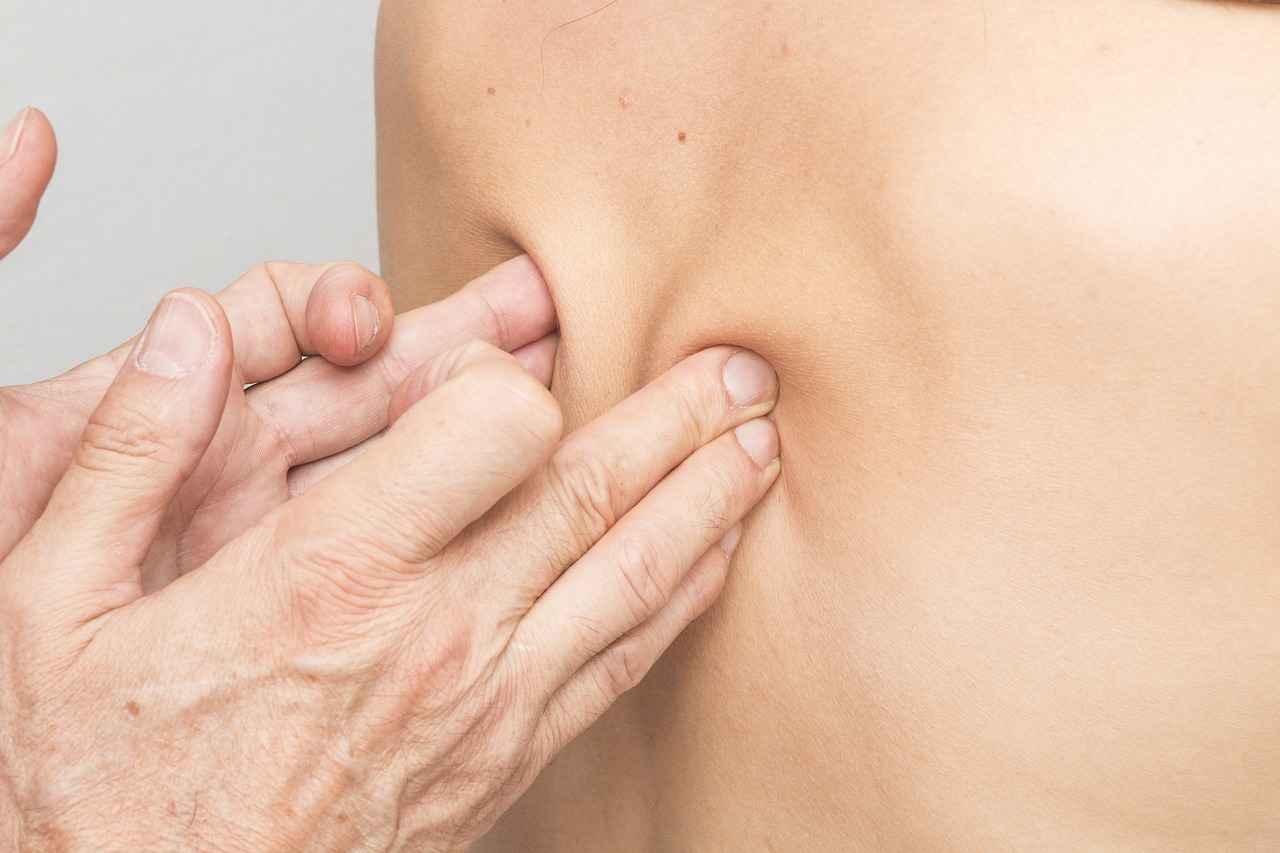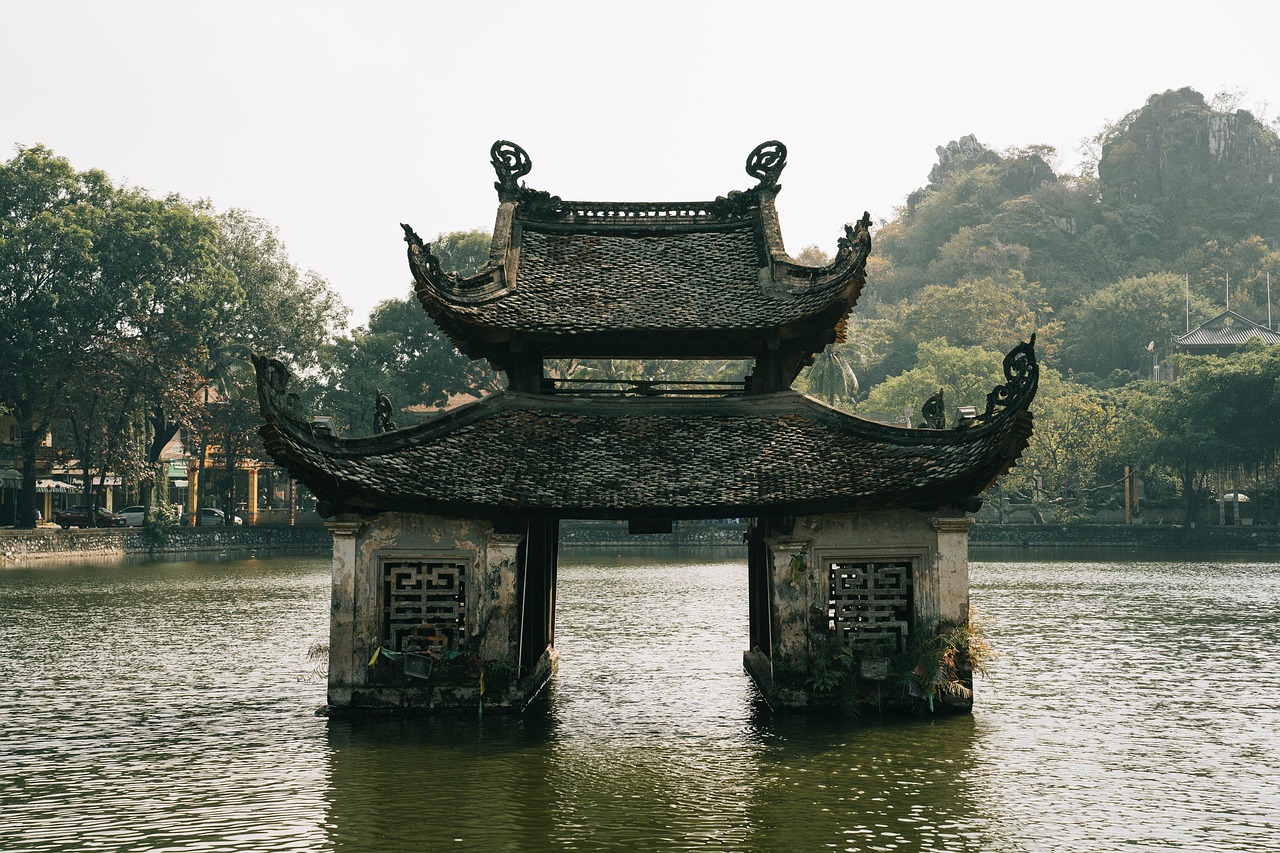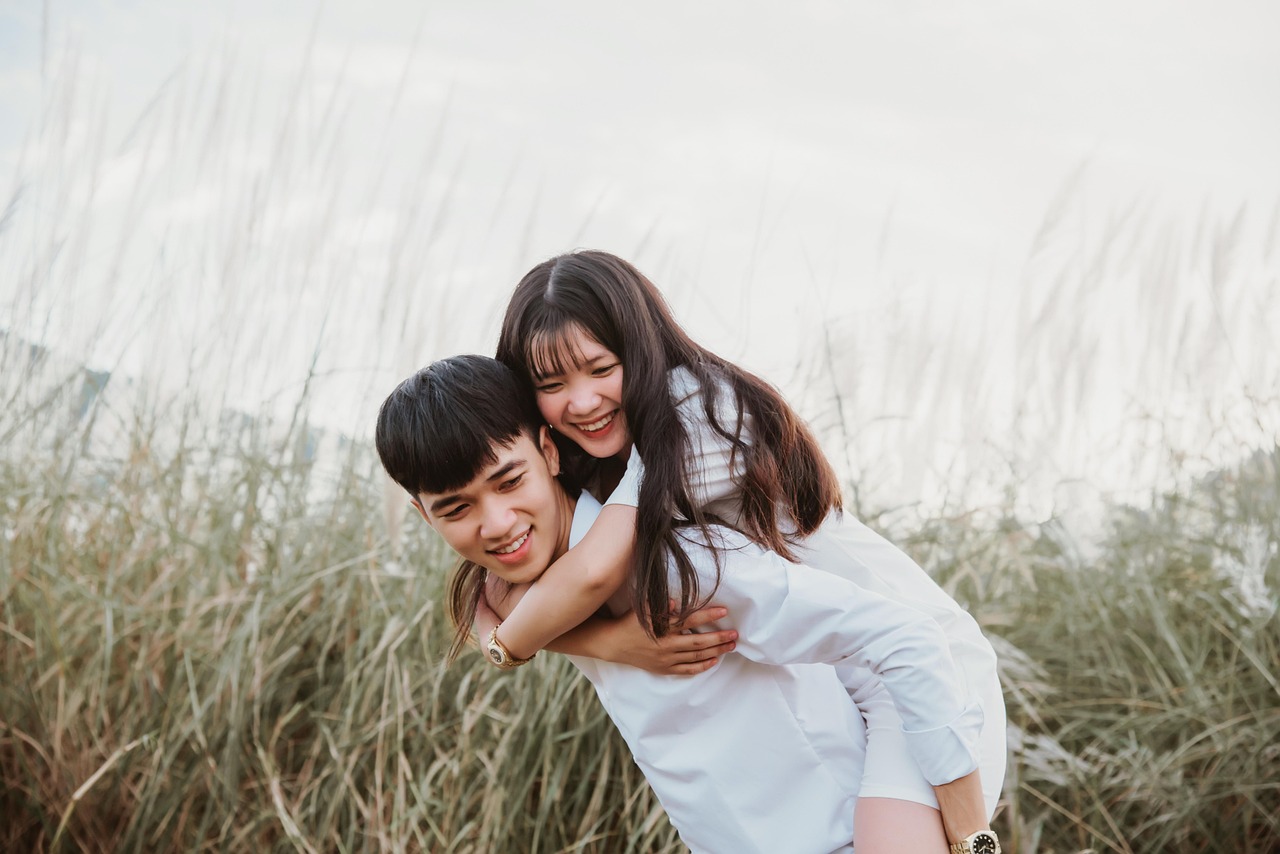This article explores the diverse techniques of Asian massage therapy, delving into their origins, benefits, and applications, providing a comprehensive understanding for both practitioners and enthusiasts alike.
What is Asian Massage Therapy?
Asian massage therapy is a holistic practice rooted in Eastern traditions, emphasizing the balance of mind, body, and spirit. It incorporates various techniques designed to enhance energy flow and promote overall well-being. The fundamental principles of this therapy focus on the interconnection of physical and mental health, highlighting the importance of energy balance in achieving optimal health.
The History of Asian Massage Techniques
Understanding the historical context of Asian massage therapy enriches its practice. Originating thousands of years ago, these techniques have evolved significantly over time. Early practices were influenced by spiritual beliefs and the natural healing properties of the body, leading to the development of various styles that are still prevalent today.
- Traditional Chinese Medicine and Massage: Traditional Chinese Medicine (TCM) is foundational to many Asian massage techniques. This relationship emphasizes concepts such as Qi (life energy) and meridians (energy pathways).
- The Role of Qi in Massage: Qi is central to many Asian healing practices. Techniques aim to balance Qi for optimal health, enhancing the body’s natural healing processes.
- Meridians and Their Importance: Understanding meridians can significantly enhance the effectiveness of massage therapy, as these pathways are believed to influence physical and emotional well-being.
Japanese Massage Techniques: Shiatsu and Beyond
Japanese massage techniques, particularly Shiatsu, focus on acupressure and stretching. Shiatsu aims to relieve tension and promote relaxation, utilizing the body’s natural energy to restore balance.
Thai Massage: A Unique Blend of Techniques
Thai massage combines elements of acupressure, yoga, and meditation. Often referred to as “lazy yoga,” it promotes flexibility and relaxation through a series of stretches and rhythmic movements.
Benefits of Asian Massage Therapy
Asian massage therapy offers numerous health benefits, including:
- Stress Relief and Relaxation: One of the primary benefits is stress relief, achieved through various techniques that promote relaxation and mental clarity.
- Pain Management Techniques: Effective in managing chronic pain, specific techniques target pain relief and enhance mobility.
Choosing the Right Asian Massage Technique for You
With a variety of techniques available, selecting the right one can be challenging. Consider personal needs and preferences, and consult with a qualified practitioner to find the best approach tailored to your unique situation.

What is Asian Massage Therapy?
Asian massage therapy is a holistic practice that integrates various techniques rooted in Eastern traditions. These methods focus on the balance of mind, body, and spirit, emphasizing the importance of energy flow for overall well-being. Unlike Western massage therapies that primarily target muscle relaxation, Asian massage approaches the body as a whole, aiming to restore harmony and promote healing.
At the core of Asian massage therapy lies the concept of Qi (or Chi), which is considered the vital life force that flows through the body. Practitioners believe that when Qi is blocked or unbalanced, it can lead to physical ailments and emotional distress. Techniques such as acupressure, shiatsu, and Thai massage are designed to stimulate specific points along the body’s meridians, facilitating the flow of Qi and enhancing health.
Meridians are the pathways through which Qi travels, and understanding their locations is crucial for effective massage therapy. By applying pressure to these pathways, therapists can alleviate pain, reduce stress, and improve overall vitality. This interconnectedness of physical and energetic aspects is what sets Asian massage apart from other modalities.
- Holistic Healing: Asian massage therapy emphasizes treating the entire person rather than just the symptoms.
- Energy Balance: Techniques are designed to restore the natural flow of energy within the body.
- Physical Well-being: Regular sessions can lead to improved flexibility, reduced tension, and enhanced mobility.
In summary, Asian massage therapy is a multifaceted approach that not only addresses physical discomfort but also fosters emotional and spiritual wellness. By understanding its foundational principles, individuals can better appreciate the profound benefits these ancient techniques offer.

The History of Asian Massage Techniques
Understanding the historical context of Asian massage therapy is essential for both practitioners and enthusiasts. This rich tradition has evolved significantly over the centuries, melding ancient practices with modern adaptations. The journey of these techniques reflects a broader understanding of health and wellness that has transcended cultural boundaries.
Asian massage therapy has its roots in ancient civilizations, where holistic healing was integral to daily life. The earliest records of massage practices can be traced back to China around 2700 BCE, where it was utilized as a part of Traditional Chinese Medicine (TCM). TCM emphasizes the balance of Qi (life energy) and the flow of energy through meridians. This foundational principle has influenced various massage techniques, including Tuina, which focuses on manipulating the body’s energy pathways to promote healing.
In addition to Chinese practices, India contributed significantly to the evolution of massage therapy through ancient texts like the Ayurveda. This holistic system advocates for the balance of body, mind, and spirit, utilizing techniques such as Abhyanga, an oil massage aimed at rejuvenation and detoxification.
As these traditions spread across Asia, they began to integrate with local customs and beliefs. For instance, Thai massage emerged as a unique blend of Indian and Chinese techniques, incorporating elements of yoga and meditation to enhance physical flexibility and mental clarity.
In modern times, Asian massage techniques have adapted to meet contemporary needs. Practitioners now blend traditional methods with modern therapeutic practices, making them accessible to a wider audience. This evolution not only preserves the rich history of these techniques but also allows for continuous innovation in the field of wellness.
By understanding the historical context of Asian massage therapy, practitioners can deepen their practice and enhance the therapeutic experience for their clients. The journey from ancient techniques to modern adaptations illustrates the enduring significance of these practices in promoting holistic health.
Traditional Chinese Medicine and Massage
Traditional Chinese Medicine (TCM) is a holistic approach to health and wellness that has influenced various healing practices, particularly Asian massage techniques. This section delves into the intricate relationship between TCM and massage, focusing on essential concepts such as Qi and meridians, which are pivotal in understanding how these therapies work.
At the heart of TCM is the belief that the body is a complex system of energy flows. Qi, often translated as “life energy,” is considered the vital force that sustains life and health. In TCM, it is believed that when Qi flows freely through the body, a person experiences optimal health. Conversely, blockages or imbalances in Qi can lead to physical and emotional ailments. Massage techniques derived from TCM aim to restore this balance, enhancing the flow of Qi through various methods.
One of the fundamental principles of TCM is the concept of meridians. These are specific pathways through which Qi travels, connecting different organs and systems within the body. There are twelve primary meridians, each associated with a particular organ, and understanding these pathways is crucial for effective massage therapy. By targeting specific meridian points during a massage, practitioners can stimulate the flow of Qi, alleviate pain, and promote healing.
Moreover, TCM emphasizes the importance of diagnosing and treating the root cause of ailments rather than just addressing symptoms. This holistic approach is reflected in various massage techniques, such as Tui Na, which combines acupressure and manipulation to facilitate energy flow and restore balance. Practitioners often incorporate herbal remedies and dietary recommendations alongside massage to enhance overall well-being.
In summary, the synergy between Traditional Chinese Medicine and massage practices offers a profound understanding of health and healing. By focusing on the principles of Qi and meridians, individuals can experience the transformative benefits of these ancient techniques, leading to improved physical and emotional health.
The Role of Qi in Massage
is a fundamental concept in various Asian healing practices, particularly within the framework of Traditional Chinese Medicine (TCM). Qi, often translated as “life energy,” is believed to flow through the body along specific pathways known as meridians. Understanding and balancing Qi is essential for achieving optimal health and well-being.
Massage techniques in Asian traditions are designed to facilitate the smooth flow of Qi, helping to remove blockages and restore balance. These techniques vary widely, but they all share a common goal: to enhance the body’s natural healing abilities. By applying pressure to specific points along the meridians, practitioners aim to stimulate the flow of Qi, promoting relaxation and alleviating physical ailments.
- Acupressure: This technique involves applying pressure to specific points on the body, similar to acupuncture but without needles. By targeting these points, acupressure can help release stagnant Qi and encourage its movement.
- Tui Na: A form of Chinese therapeutic massage, Tui Na combines various hand techniques to manipulate the body’s energy. It is often used to treat musculoskeletal disorders and improve overall health.
- Shiatsu: Originating from Japan, Shiatsu is a massage technique that also focuses on Qi. It employs finger pressure on specific points and stretches to enhance energy flow and promote relaxation.
Moreover, the concept of Qi extends beyond physical health; it also encompasses emotional and spiritual well-being. When Qi is balanced, individuals often experience improved mood, reduced stress, and a greater sense of harmony in their lives. Conversely, when Qi is blocked or imbalanced, it can lead to various health issues, including anxiety, fatigue, and chronic pain.
In summary, is integral to the effectiveness of these healing practices. By focusing on the flow of life energy, practitioners can help individuals achieve not only physical relief but also emotional and spiritual balance, leading to a holistic approach to health and wellness.
Meridians and Their Importance
Meridians are integral to the understanding of Asian massage therapy, serving as vital pathways for energy flow throughout the body. These channels, as described in Traditional Chinese Medicine (TCM), are believed to connect various organs and systems, facilitating the flow of Qi, or life energy. By comprehending the role of meridians, practitioners can enhance the effectiveness of their massage techniques, leading to improved health outcomes for clients.
Each meridian corresponds to specific organs and functions, and their blockages can result in physical or emotional ailments. For instance, the Liver Meridian is linked to detoxification and emotional balance, while the Heart Meridian influences emotional well-being and circulation. Recognizing these connections allows therapists to target specific areas during treatment, effectively addressing both physical discomfort and emotional stress.
Understanding meridians also aids in the selection of appropriate techniques. For example, acupressure, a common practice in Asian massage, involves applying pressure to specific points along these meridians to restore balance and facilitate energy flow. This targeted approach not only alleviates pain but also promotes overall wellness by harmonizing the body’s energy.
Furthermore, the concept of meridians emphasizes the importance of holistic healing. By considering the interconnectedness of the body, mind, and spirit, therapists can create a more comprehensive treatment plan. This may include integrating other modalities such as aromatherapy or meditation to enhance the therapeutic experience.
In summary, a deep understanding of meridians is crucial for maximizing the benefits of massage therapy. By focusing on these energy pathways, practitioners can tailor their techniques to address specific issues, promoting not only physical healing but also emotional and spiritual well-being.
Japanese Massage Techniques: Shiatsu and Beyond
Japanese massage techniques encompass a variety of methods that have evolved over centuries, with Shiatsu being one of the most recognized forms. Shiatsu, which translates to “finger pressure,” is a unique modality that integrates acupressure and gentle stretching to promote overall wellness. This section delves into the distinct approach of Shiatsu and its therapeutic benefits.
Shiatsu is rooted in the principles of Traditional Chinese Medicine (TCM), focusing on the flow of Qi (life energy) throughout the body. The practice is designed to restore balance and harmony by applying pressure to specific points along the body’s meridians. These points correspond to various organs and systems, allowing for targeted treatment of physical and emotional ailments.
One of the key elements of Shiatsu is its emphasis on stretching. Unlike many Western massage techniques that primarily involve kneading, Shiatsu incorporates stretches that enhance flexibility and release tension. This dual approach not only alleviates muscle tightness but also promotes circulation and aids in the detoxification process.
The therapeutic benefits of Shiatsu are numerous. Regular sessions can lead to improved stress management, better sleep quality, and enhanced emotional well-being. Many practitioners report a reduction in chronic pain conditions, such as lower back pain and migraines, as Shiatsu works to address the root causes of discomfort rather than just the symptoms.
Moreover, Shiatsu is highly adaptable, making it suitable for individuals of all ages and physical conditions. Whether you are seeking relief from specific ailments or simply wish to maintain your overall health, Shiatsu offers a holistic approach that aligns with the body’s natural rhythms.
In summary, Japanese massage techniques, particularly Shiatsu, provide a comprehensive method for enhancing physical and mental health. By focusing on acupressure and stretching, Shiatsu not only addresses immediate concerns but also fosters long-term wellness.

Thai Massage: A Unique Blend of Techniques
Thai massage is a captivating therapy that intricately weaves together elements of acupressure, yoga, and meditation. This unique combination not only distinguishes Thai massage from other forms of bodywork but also enhances its holistic approach to wellness. Practiced for centuries, Thai massage is often described as a form of “lazy yoga,” where the therapist guides the recipient through a series of stretches and poses that promote flexibility and relaxation.
At the heart of Thai massage lies the concept of energy flow. Practitioners believe that the body has a network of energy lines, known as Sen lines, similar to the meridian system in Traditional Chinese Medicine. By applying pressure to specific points along these lines, therapists aim to unblock energy pathways, facilitating a smoother flow of Qi (or life energy). This process not only alleviates physical tension but also fosters a deeper sense of emotional balance.
The techniques employed in Thai massage are diverse and dynamic. Sessions typically involve a combination of stretching, rhythmic pressure, and gentle rocking movements. These methods not only enhance muscle elasticity but also stimulate circulation, promoting overall vitality. Furthermore, the incorporation of meditative practices allows clients to enter a state of deep relaxation, where stress and anxiety can be effectively released.
The holistic benefits of Thai massage extend beyond the physical realm. Regular sessions can lead to improvements in mental clarity, emotional stability, and overall well-being. Many individuals report feeling rejuvenated and more centered after a treatment, making Thai massage an invaluable addition to any wellness routine.
In summary, Thai massage is a rich tapestry of techniques that offers profound benefits for both the body and mind. By harmonizing physical movement with energy work and mindfulness, this ancient practice provides a unique pathway to holistic health.
The Art of Thai Massage
is often referred to as “lazy yoga” due to its unique blend of techniques that incorporate elements of acupressure, yoga, and meditation. This ancient practice is not just about physical manipulation; it is a holistic approach that aims to promote both physical flexibility and mental relaxation.
Thai massage is characterized by its use of bodyweight techniques, where the therapist uses their hands, feet, elbows, and knees to apply pressure along the body’s energy lines known as Sen lines. This method allows for a deep stretch and a comprehensive release of tension throughout the body. Unlike traditional massage, where the recipient typically lies still, Thai massage encourages active participation, allowing clients to engage in gentle movements that enhance their overall experience.
One of the defining features of Thai massage is its focus on energy flow. Practitioners believe that by stimulating the Sen lines, they can help balance the body’s energy, leading to improved health and well-being. This practice often includes elements of meditation and breathing techniques, which further enhance the therapeutic benefits.
Additionally, Thai massage is known for its ability to improve flexibility and circulation. Many clients report feeling energized and rejuvenated after a session, as the combination of stretching and pressure helps to release endorphins and promote relaxation. This makes Thai massage an excellent choice for individuals looking to alleviate stress and tension while improving their overall physical condition.
In summary, the art of Thai massage offers a unique approach to wellness that emphasizes the connection between body and mind. Its combination of acupressure, yoga-like stretches, and mindful breathing creates a deeply restorative experience that can benefit anyone seeking to enhance their physical and mental health.
lazy yoga.
Lazy yoga is a term often associated with Thai massage, a unique practice that combines elements of traditional yoga, acupressure, and meditation. This holistic approach not only promotes physical flexibility but also enhances mental clarity and emotional balance. Below, we explore the essentials of lazy yoga, its techniques, benefits, and how it can transform your well-being.
Originating from ancient Thai traditions, lazy yoga is characterized by passive stretching and rhythmic movements. Practitioners are guided through a series of poses while remaining relaxed, allowing the therapist to assist in achieving deeper stretches. This method emphasizes the importance of energy flow within the body, aligning with the principles of Traditional Chinese Medicine and the concept of Qi.
| Technique | Description | Benefits |
|---|---|---|
| Passive Stretching | Therapist assists in stretching the body. | Increased flexibility and muscle relaxation. |
| Acupressure | Applying pressure to specific points. | Relief from tension and improved energy flow. |
| Meditative Breathing | Focus on breath work during poses. | Enhanced mental clarity and stress reduction. |
One of the standout features of lazy yoga is its adaptability. It can be tailored to suit individual needs, making it accessible for people of all ages and fitness levels. Whether you’re seeking relaxation, rehabilitation, or a deeper connection to your body, lazy yoga can provide a pathway to achieving those goals.
In addition to physical benefits, lazy yoga fosters a sense of community and connection. Many practitioners find that participating in group sessions enhances their experience, creating a supportive environment that encourages personal growth.
In summary, lazy yoga is not just a practice; it’s a journey towards holistic well-being. By embracing its techniques and principles, individuals can unlock their potential for improved health and vitality.
Here, we explore its techniques that promote flexibility, relaxation, and energy balance.
The Essentials of Asian Massage Therapy Techniques Explained
This article explores the diverse techniques of Asian massage therapy, delving into their origins, benefits, and applications, providing a comprehensive understanding for both practitioners and enthusiasts alike.
What is Asian Massage Therapy?
Asian massage therapy encompasses various techniques originating from Eastern traditions, focusing on holistic healing, energy flow, and physical well-being. This section outlines its fundamental principles and practices.
The History of Asian Massage Techniques
Understanding the historical context of Asian massage therapy enriches its practice. This section highlights the evolution of techniques from ancient times to their modern adaptations.
Traditional Chinese Medicine and Massage
Traditional Chinese medicine (TCM) forms the backbone of many Asian massage techniques. This part examines the relationship between TCM and massage practices, emphasizing concepts like Qi and meridians.
The Role of Qi in Massage
Qi, or life energy, is central to many Asian healing practices. Here, we discuss how massage techniques aim to balance Qi for optimal health.
Meridians and Their Importance
Meridians are energy pathways in the body. This section details how understanding meridians enhances the effectiveness of massage therapy.
Japanese Massage Techniques: Shiatsu and Beyond
Japanese massage techniques, particularly Shiatsu, focus on acupressure and stretching. This subsection explores its unique approach and therapeutic benefits.
Thai Massage: A Unique Blend of Techniques
Thai massage combines acupressure, yoga, and meditation. This section delves into its distinctive methods and the holistic benefits it offers.
The Art of Thai Massage
Thai massage is often referred to as lazy yoga. Here, we explore its techniques that promote flexibility, relaxation, and energy balance.
Benefits of Thai Massage
This section outlines the physical and mental health benefits of Thai massage, supported by scientific studies and expert opinions.
Benefits of Asian Massage Therapy
Asian massage therapy offers numerous health benefits, from stress relief to pain management. This section summarizes its key advantages for physical and mental well-being.
Stress Relief and Relaxation
One of the primary benefits of Asian massage therapy is stress relief. Here, we discuss various techniques that promote relaxation and mental clarity.
Pain Management Techniques
Asian massage can be effective in managing chronic pain. This part explores specific techniques that target pain relief and enhance mobility.
Choosing the Right Asian Massage Technique for You
With various techniques available, selecting the right one can be challenging. This section provides guidance on how to choose based on personal needs and preferences.
Benefits of Thai Massage
Thai massage, a traditional healing practice with roots in ancient Thailand, offers a multitude of physical and mental health benefits. This unique form of massage combines elements of acupressure, yoga, and meditation, creating a holistic approach to wellness. Scientific studies and expert opinions underscore the effectiveness of Thai massage in promoting overall health.
- Improved Flexibility: The stretching techniques used in Thai massage help to enhance flexibility and range of motion, making it beneficial for athletes and those with physically demanding lifestyles.
- Pain Relief: Numerous studies indicate that Thai massage can alleviate chronic pain conditions, such as lower back pain and migraines, by relaxing tense muscles and improving blood circulation.
- Enhanced Circulation: The rhythmic pressure applied during the massage promotes better blood flow, which can lead to improved organ function and overall vitality.
- Stress Reduction: Thai massage has been shown to lower cortisol levels, the hormone associated with stress, helping individuals feel more relaxed and centered.
- Improved Mental Clarity: The meditative aspects of Thai massage encourage mindfulness, which can enhance focus and cognitive function.
- Emotional Balance: Regular sessions can lead to improved mood and emotional stability, making it a valuable tool for those dealing with anxiety or depression.
In conclusion, the benefits of Thai massage extend far beyond relaxation. With a blend of physical and mental health improvements, this ancient practice is supported by scientific research and expert testimony, making it a valuable addition to anyone’s wellness routine.
Benefits of Asian Massage Therapy
Asian massage therapy is renowned for its holistic approach to health and wellness, offering a myriad of benefits that extend beyond mere relaxation. This section delves into the key advantages of these ancient practices, highlighting their significance for both physical and mental well-being.
- Stress Relief and Relaxation: One of the most celebrated benefits of Asian massage therapy is its ability to alleviate stress. Techniques such as Shiatsu and Thai massage utilize rhythmic pressure and stretching to release tension, promoting a profound sense of relaxation. This not only calms the mind but also enhances mental clarity, allowing individuals to approach daily challenges with renewed vigor.
- Pain Management and Relief: Many individuals turn to Asian massage for effective pain management. Techniques like acupressure and deep tissue massage target specific pain points, helping to reduce chronic pain conditions such as back pain, arthritis, and headaches. The manipulation of muscles and energy pathways can significantly enhance mobility and overall physical comfort.
- Improved Circulation: Asian massage techniques stimulate blood flow, which is essential for delivering nutrients and oxygen to the body’s tissues. Improved circulation can lead to faster recovery from injuries and enhanced overall vitality.
- Enhanced Flexibility and Mobility: Practices such as Thai massage incorporate elements of yoga, encouraging stretching and movement that can improve flexibility. Regular sessions can help maintain joint health and prevent stiffness, making it particularly beneficial for athletes and active individuals.
- Emotional Balance: Beyond physical benefits, Asian massage therapy promotes emotional well-being. The calming effects of these therapies can help reduce anxiety and depression, providing a safe space for emotional release and healing.
- Holistic Health Benefits: Asian massage is rooted in the principles of holistic health, addressing not just physical ailments but also emotional and spiritual aspects of well-being. This comprehensive approach fosters a deeper connection between the mind and body, promoting overall health.
In summary, Asian massage therapy offers a rich tapestry of benefits that cater to various aspects of well-being. Whether seeking relief from stress, pain management, or a holistic approach to health, these ancient techniques provide valuable tools for enhancing quality of life.
Stress Relief and Relaxation
Asian massage therapy is renowned for its ability to provide stress relief and promote relaxation. In today’s fast-paced world, where stress is a common ailment, these ancient techniques offer a sanctuary for those seeking mental clarity and peace. This section will explore various methods utilized in Asian massage therapy that specifically target stress reduction and enhance overall well-being.
One of the most effective techniques is Shiatsu, a Japanese form of massage that applies pressure to specific points on the body. By stimulating these acupressure points, Shiatsu helps to release tension and restore balance to the body’s energy flow, known as Qi. This not only alleviates physical discomfort but also calms the mind, leading to a profound sense of relaxation.
Another popular method is Thai massage, which combines elements of yoga and acupressure. Practitioners use gentle stretching and rhythmic compression to release tight muscles and improve flexibility. This holistic approach not only promotes physical relaxation but also encourages mental tranquility, making it an excellent choice for those overwhelmed by stress.
Traditional Chinese Medicine (TCM) also plays a crucial role in stress relief through its focus on energy pathways, or meridians. By understanding how these pathways function, massage therapists can effectively target areas of tension, facilitating the flow of Qi and promoting a state of calm.
In addition to these techniques, the incorporation of aromatherapy during massage sessions can significantly enhance the relaxation experience. Essential oils such as lavender and chamomile are known for their calming properties and can help to further alleviate stress.
In summary, the diverse techniques of Asian massage therapy offer various pathways to achieve stress relief and relaxation. By engaging in these time-honored practices, individuals can find solace from the pressures of daily life, fostering a greater sense of mental clarity and emotional balance.

Pain Management Techniques
in Asian massage therapy are designed to provide relief for those suffering from chronic pain conditions. These techniques are rooted in ancient practices and have been refined over centuries to enhance physical wellness and mobility. This section will delve into specific methods that have proven effective in alleviating pain and improving the quality of life for many individuals.
- Acupressure: This technique involves applying pressure to specific points on the body to release tension and blockages. By stimulating these points, acupressure can help reduce pain and promote relaxation.
- Tuina: A form of Chinese therapeutic massage, Tuina combines acupressure with rhythmic movements. It is particularly effective for musculoskeletal pain, helping to enhance circulation and relieve discomfort.
- Shiatsu: Originating from Japan, Shiatsu employs finger pressure on acupuncture points to balance the body’s energy. This technique not only alleviates pain but also promotes overall well-being by harmonizing the body’s energy flow.
- Thai Massage: Known for its unique combination of stretching and acupressure, Thai massage helps to release muscle tension and improve flexibility. This technique is especially beneficial for those with chronic pain, as it promotes mobility and reduces stiffness.
- Qigong Massage: Integrating gentle movements with breathing techniques, Qigong massage focuses on enhancing the flow of Qi. This holistic approach can alleviate pain by addressing both physical and emotional aspects of discomfort.
Each of these techniques has its unique approach and benefits, making them suitable for various types of pain. Whether dealing with back pain, arthritis, or muscle tension, Asian massage therapy offers a range of options to explore. By understanding these methods, individuals can make informed choices about their pain management strategies, leading to improved mobility and overall health.
Choosing the Right Asian Massage Technique for You
Choosing the right Asian massage technique can be a daunting task due to the vast array of options available. Each technique offers unique benefits and caters to different needs, making it essential to understand your personal preferences and health goals before making a decision. Here are some key factors to consider:
- Identify Your Goals: Determine what you hope to achieve from the massage. Are you seeking relaxation, pain relief, or improved flexibility? Different techniques target various outcomes.
- Consider Your Health Condition: If you have specific health issues, such as chronic pain or stress-related conditions, certain techniques may be more beneficial. For example, Shiatsu is excellent for tension relief, while Thai massage can enhance flexibility.
- Understand the Techniques: Familiarize yourself with the various Asian massage techniques:
- Shiatsu: A Japanese technique focusing on acupressure and deep tissue work.
- Thai Massage: Combines stretching and acupressure, often referred to as “lazy yoga.”
- Tuina: A Chinese massage that incorporates acupressure and manipulation.
- Personal Preferences: Think about what you enjoy. Do you prefer firm pressure or gentle touch? Your comfort level is crucial in selecting the right technique.
- Consult a Professional: If uncertain, consult with a massage therapist who can assess your needs and recommend suitable techniques based on their expertise.
By carefully evaluating these factors, you can make an informed decision that aligns with your individual health needs and preferences. Remember, the right massage technique can significantly enhance your overall well-being, providing both physical relief and mental clarity.
Frequently Asked Questions
- What are the main benefits of Asian massage therapy?
Asian massage therapy offers a plethora of benefits, including stress relief, enhanced flexibility, and improved circulation. It can also aid in pain management and promote overall mental well-being, making it a holistic approach to health.
- How do I choose the right Asian massage technique for my needs?
Choosing the right technique depends on your personal preferences and health goals. For relaxation, consider Thai massage; for pain relief, Shiatsu might be more effective. Consulting with a qualified therapist can also help you make an informed decision.
- Is Asian massage therapy safe for everyone?
While most people can benefit from Asian massage therapy, it’s essential to consult with a healthcare provider if you have specific health concerns or conditions. Pregnant women and individuals with certain medical issues should approach these therapies with caution.
- How often should I receive Asian massage therapy?
The frequency of sessions can vary based on individual needs. Many people find that regular sessions, such as once a week or bi-weekly, help maintain balance and wellness, while others may prefer occasional treatments for relaxation.
- What should I expect during my first Asian massage session?
During your first session, you can expect a consultation where the therapist will discuss your health history and goals. The massage itself may involve various techniques tailored to your needs, focusing on relaxation and energy flow.












